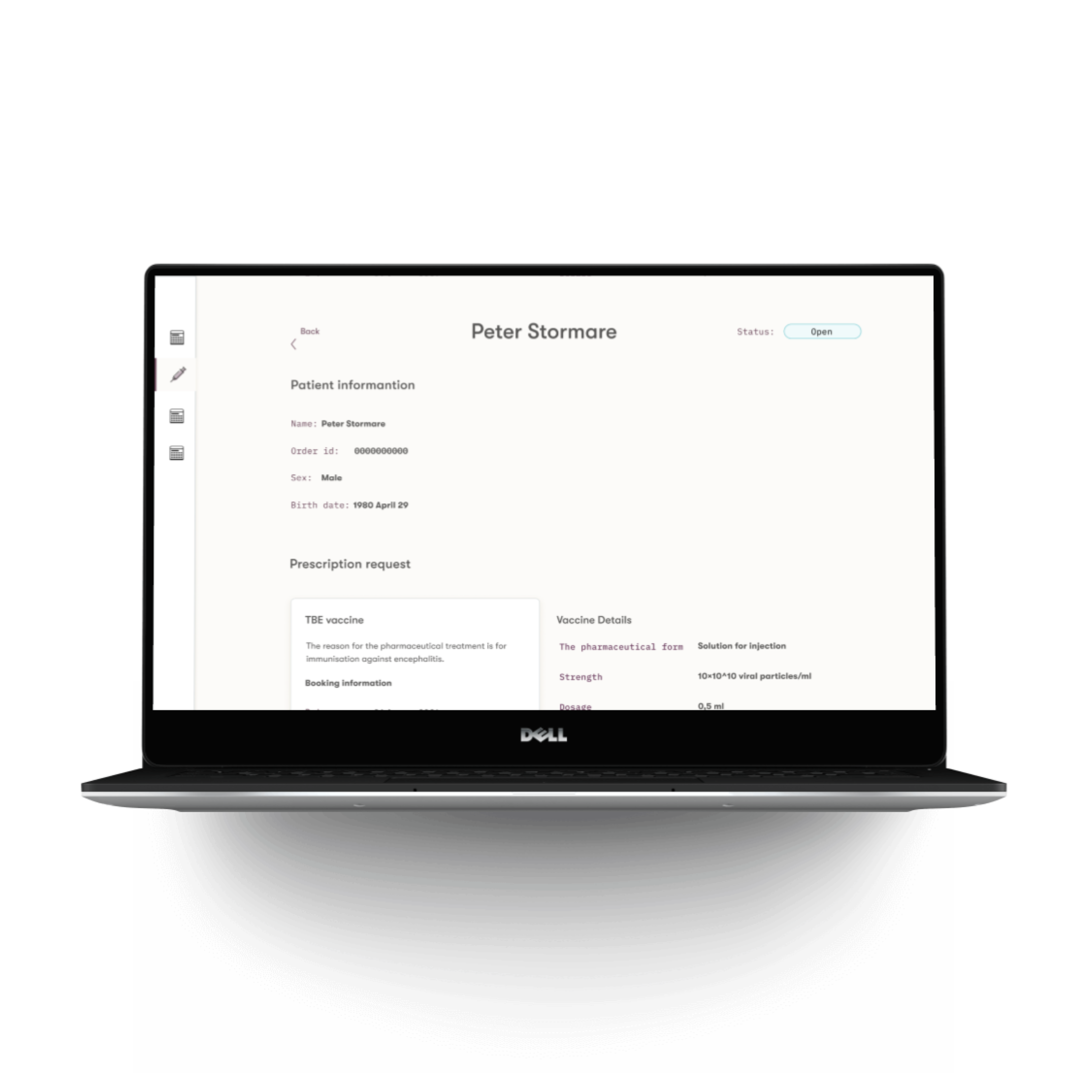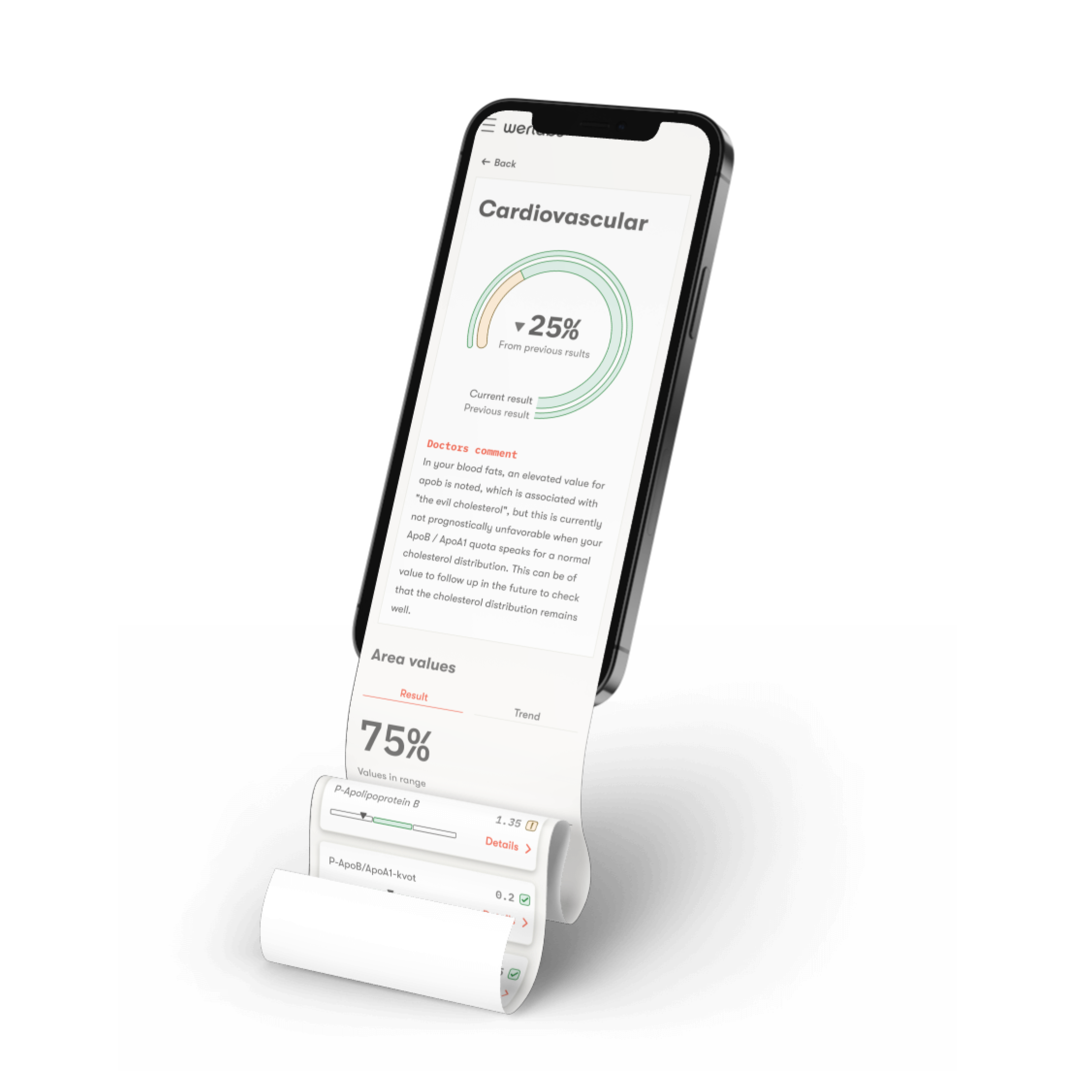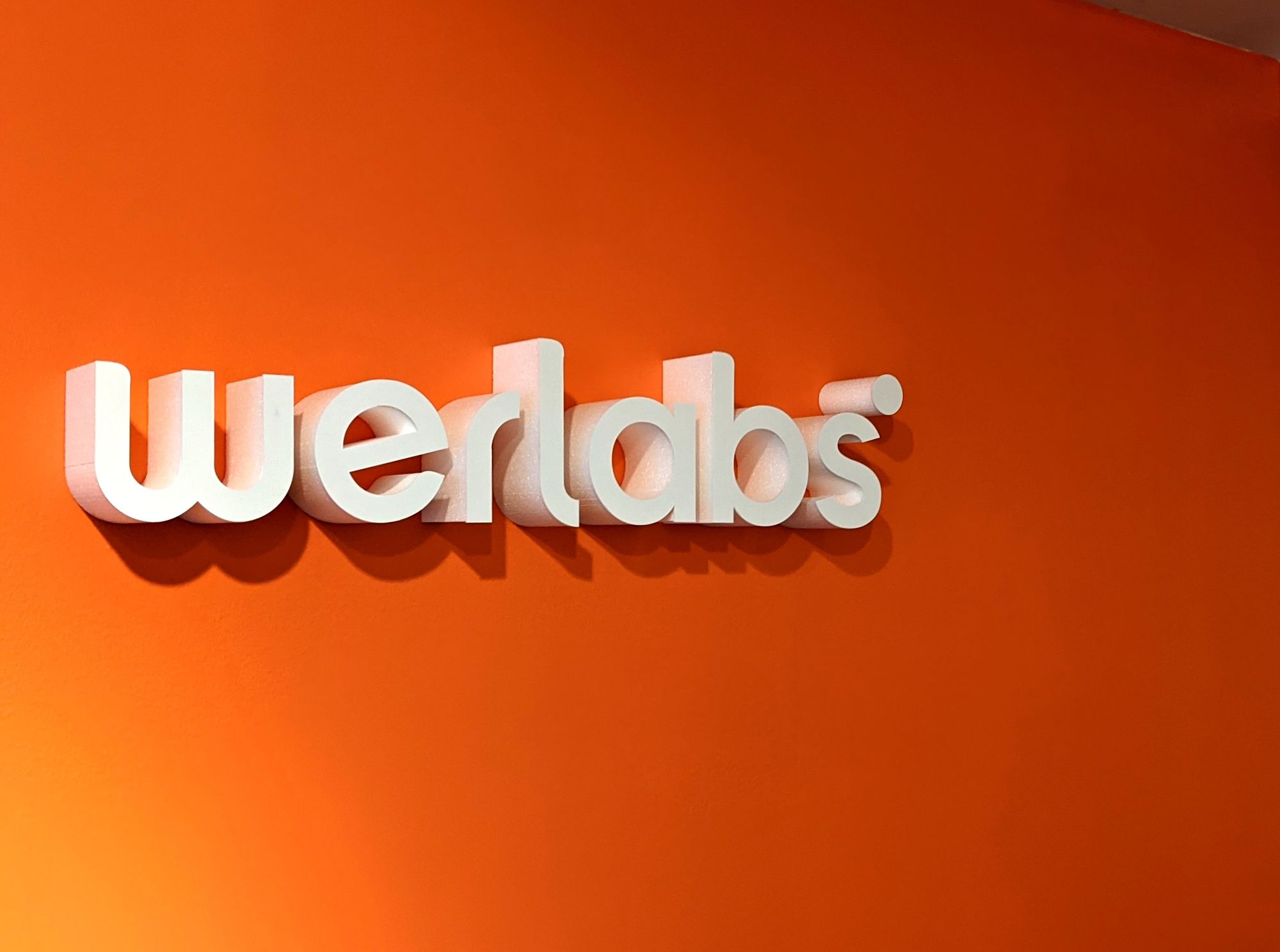
Introduction
Joining Werlabs as Head of Design, I was immediately thrust into a pivotal project amidst the Covid-19 pandemic. Our mission was to facilitate Covid vaccinations, a task that involved close collaboration with internal teams and the region of Stockholm. Organizing mass vaccinations at Kista's main conference centre, accommodating up to 5000 people daily was definatly a large task to undertake.
Approach and Strategy
Service Blueprint
Understanding the intricate logistics and user journey was paramount. I initiated this by developing a service blueprint, a tool that underwent several iterations but proved crucial in identifying pain points and optimization opportunities in the vaccination process.
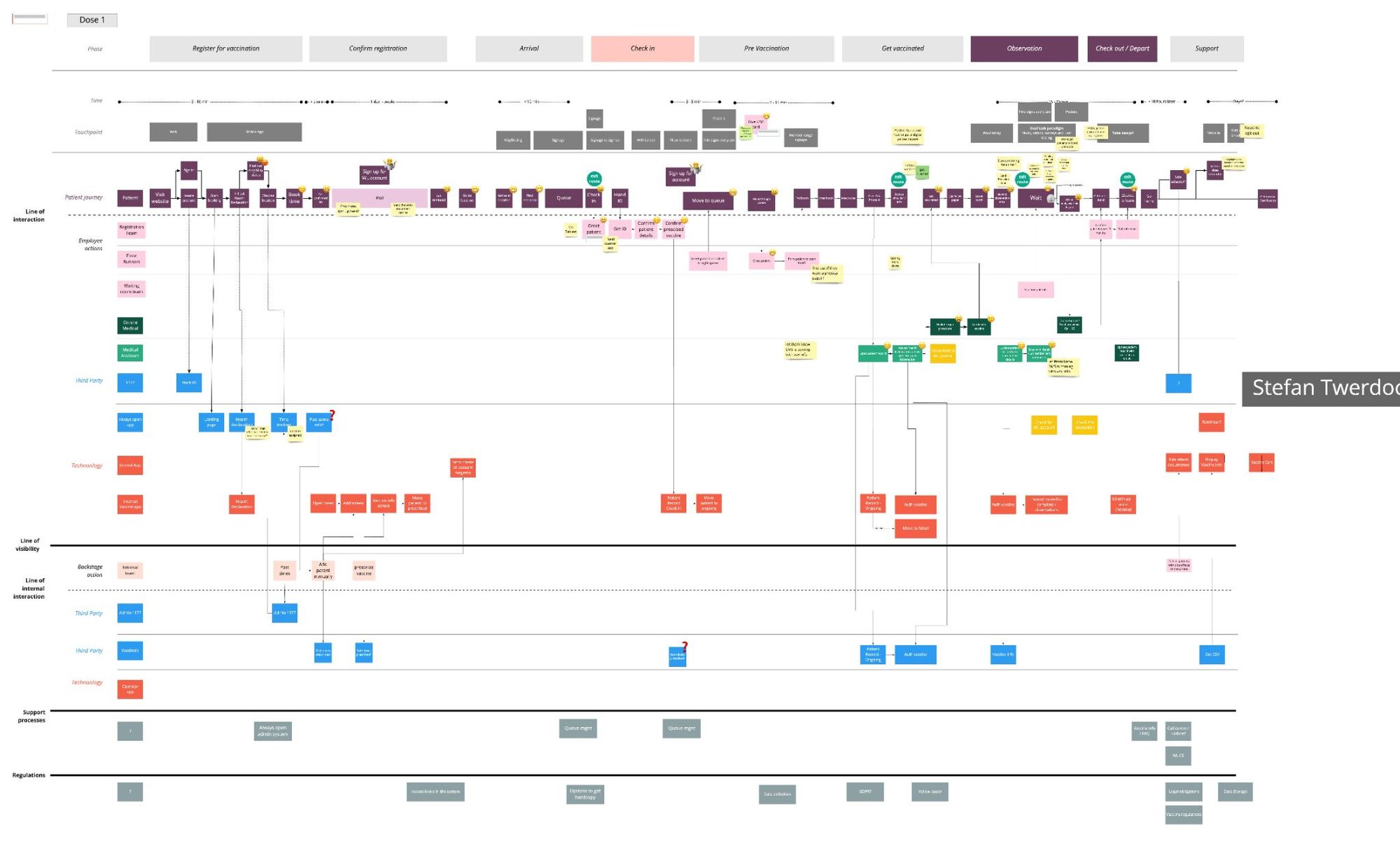
Floor Planning and Operations Collaboration
Working with the operations team, we meticulously planned the floor layout, leveraging insights from the service blueprint. This approach allowed us to strategically position staff and resources, ensuring an efficient flow of participants through the vaccination process.
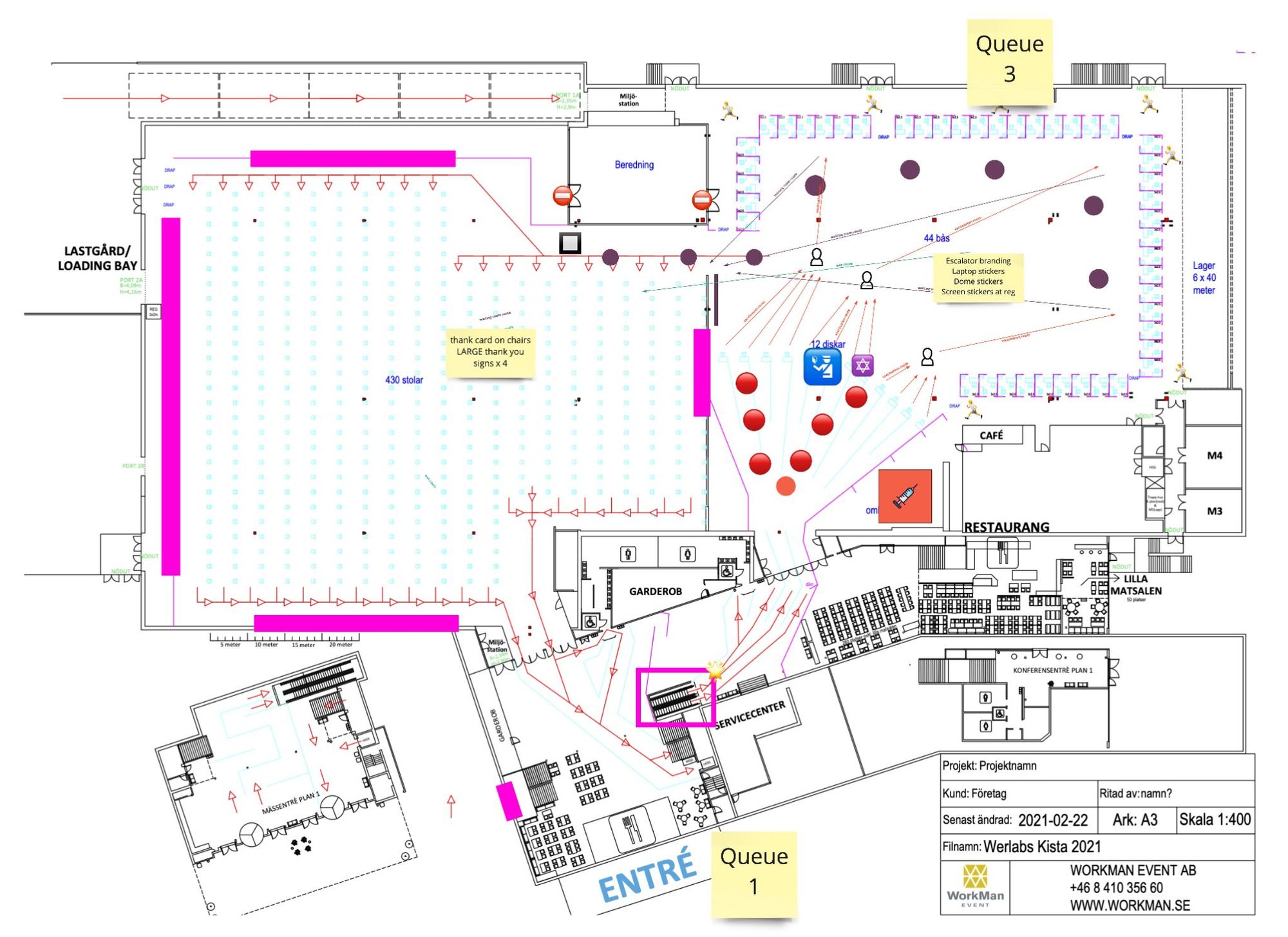
Signage Design
To navigate the cultural diversity of Kista, we embraced a bilingual approach (Swedish and English) for all signage. I brought on board Alex Nardi, a talented designer, to craft clear, intuitive, airport-style wayfinding signage. Our goal was simplicity and immediate comprehension, vital for a smooth vaccination experience.
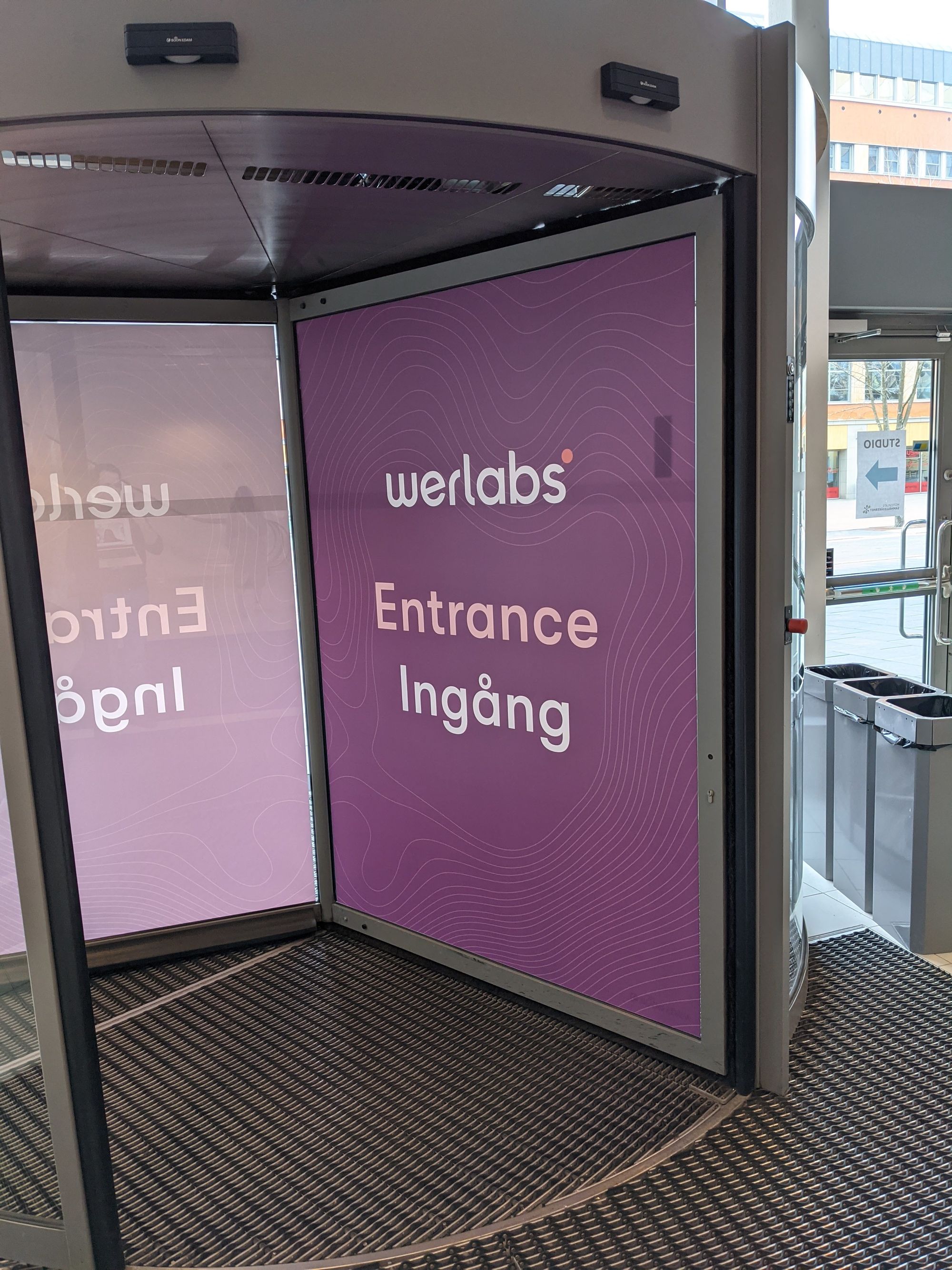
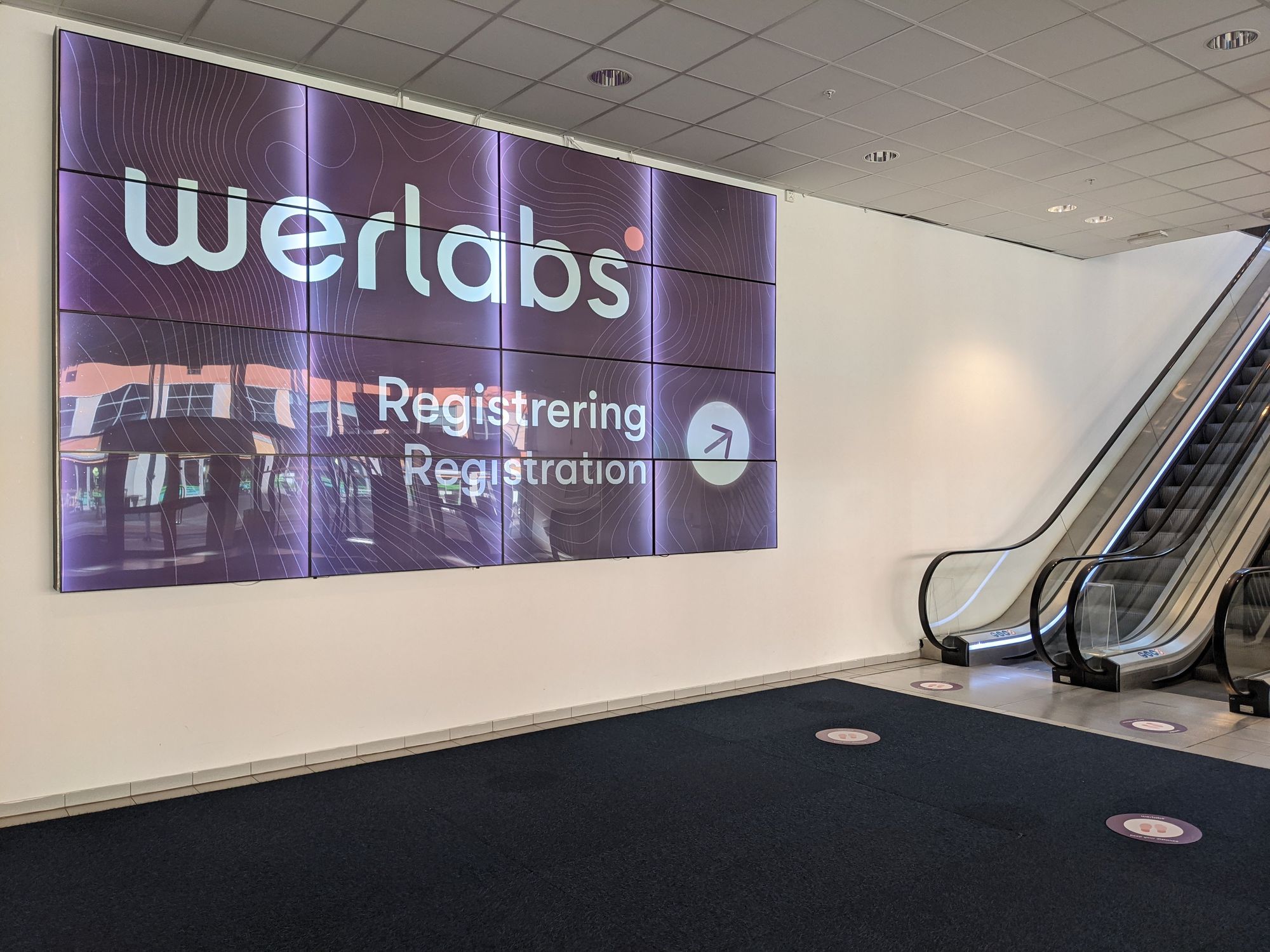
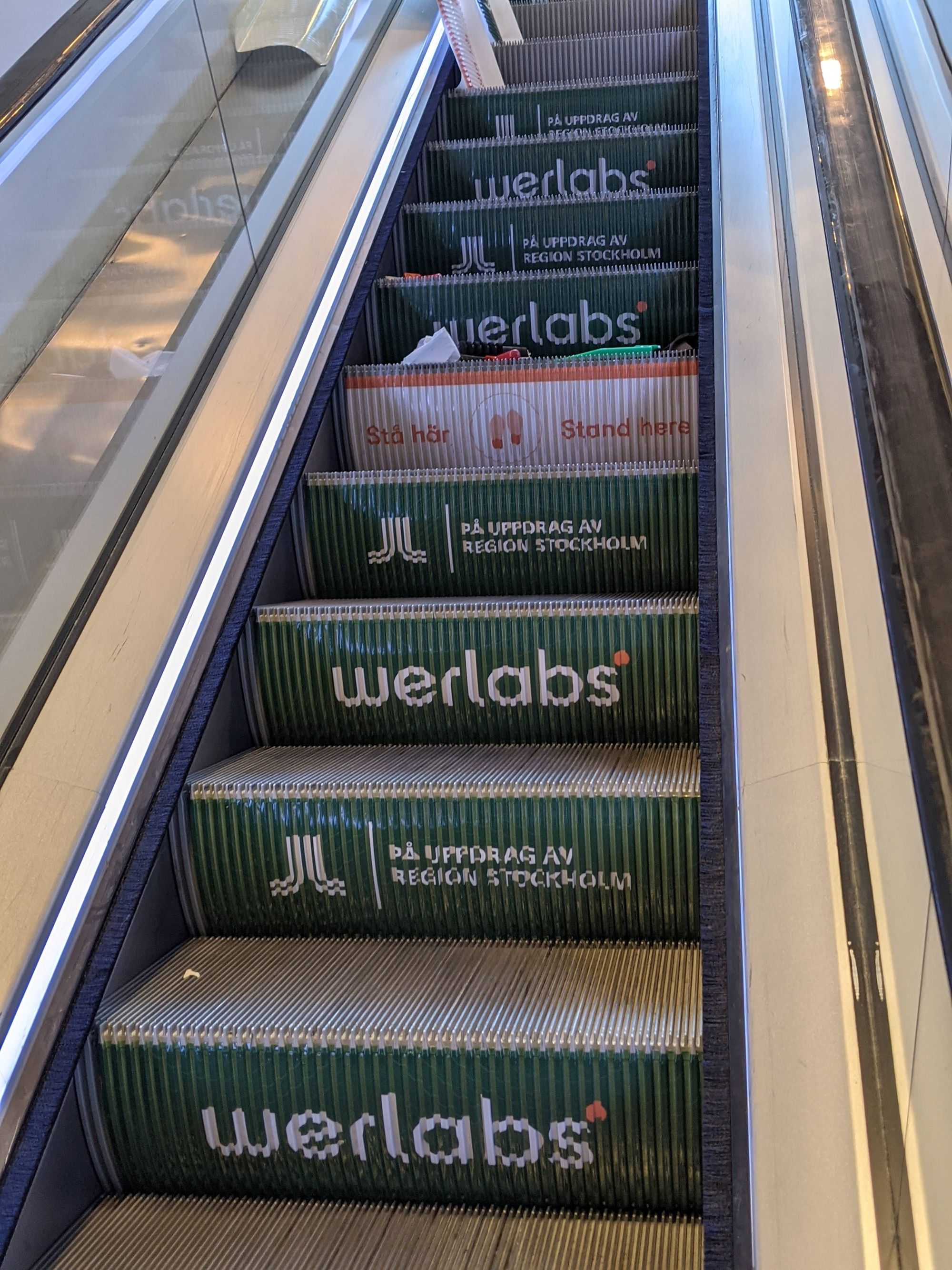
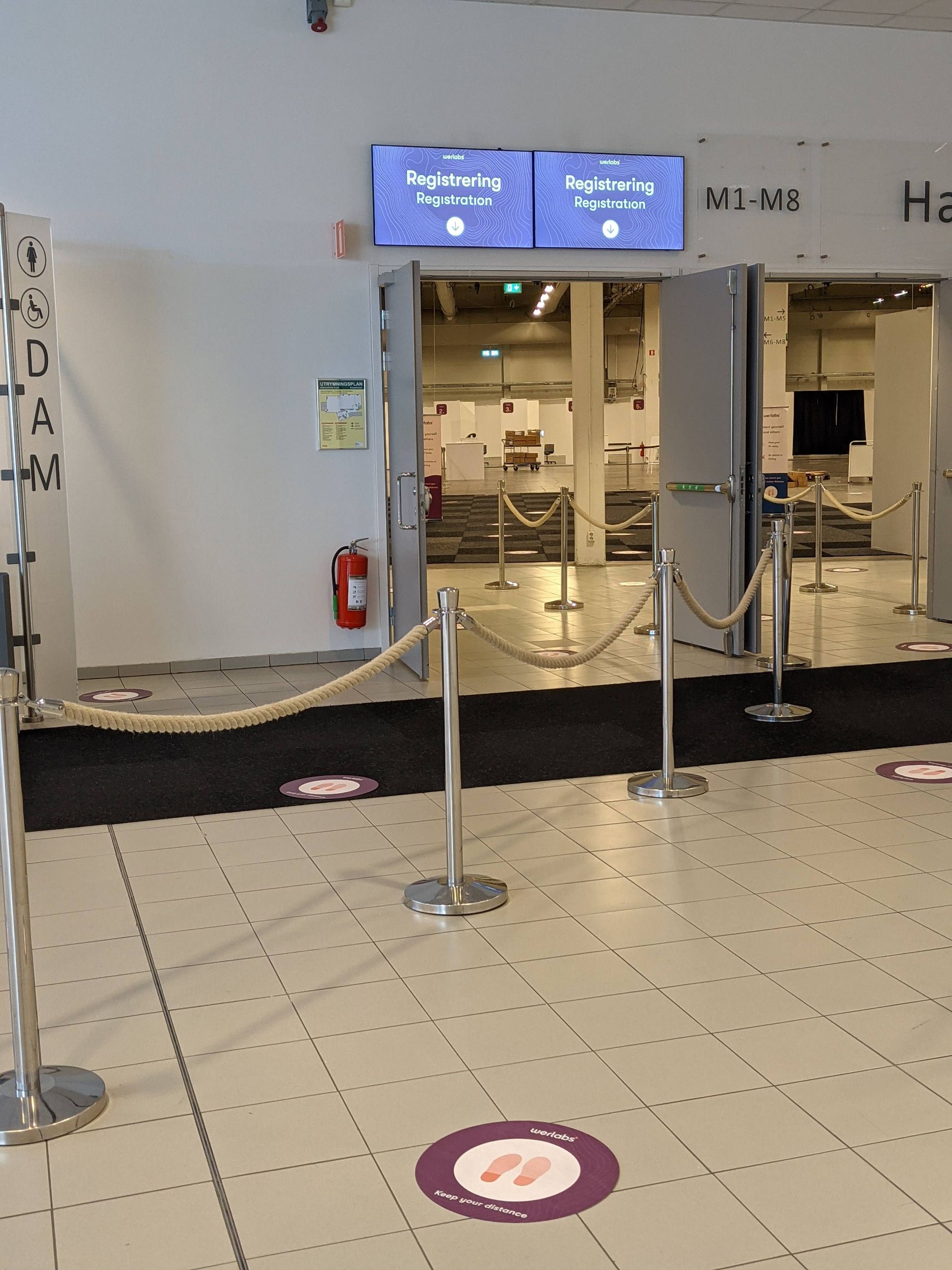
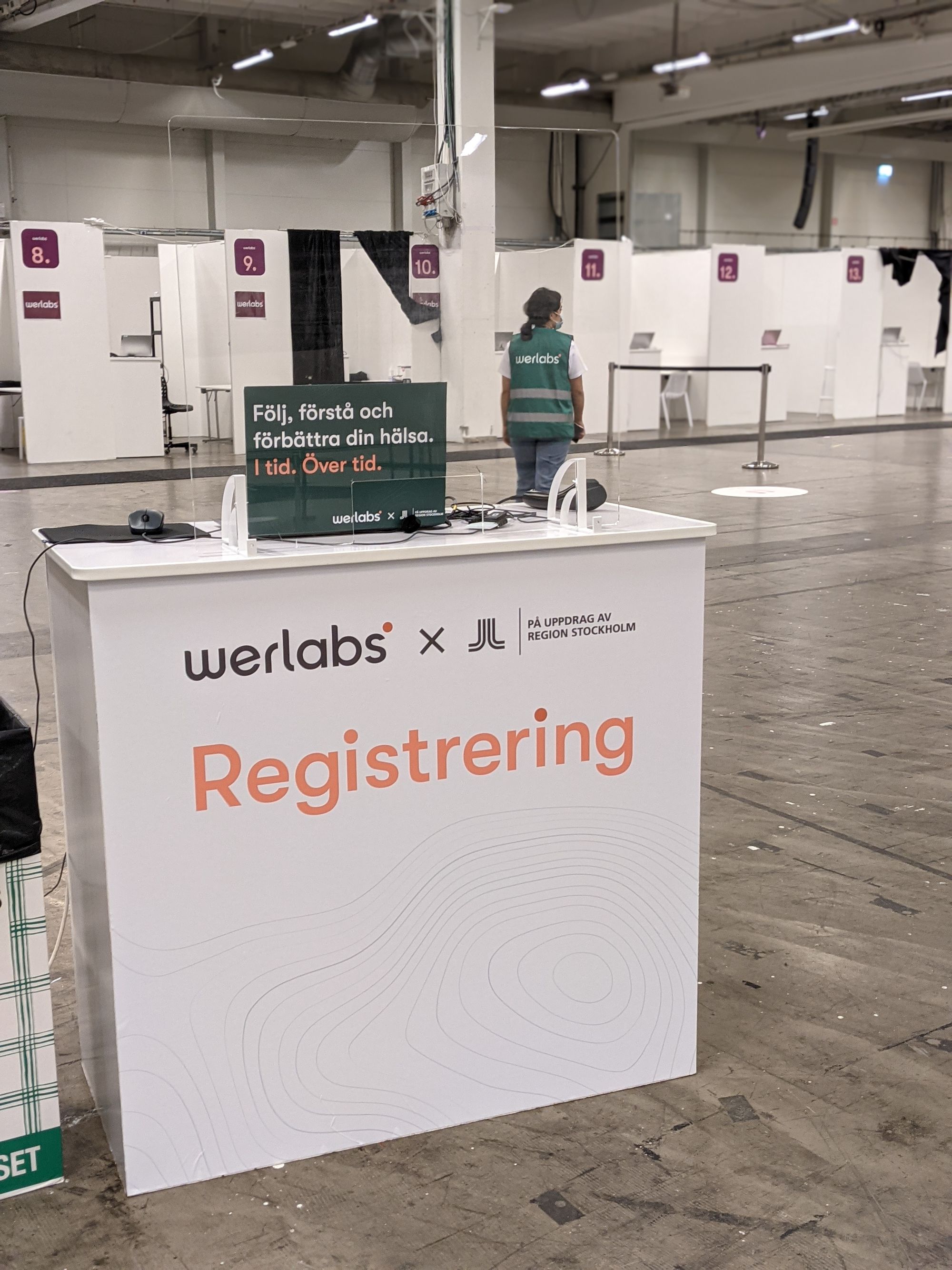
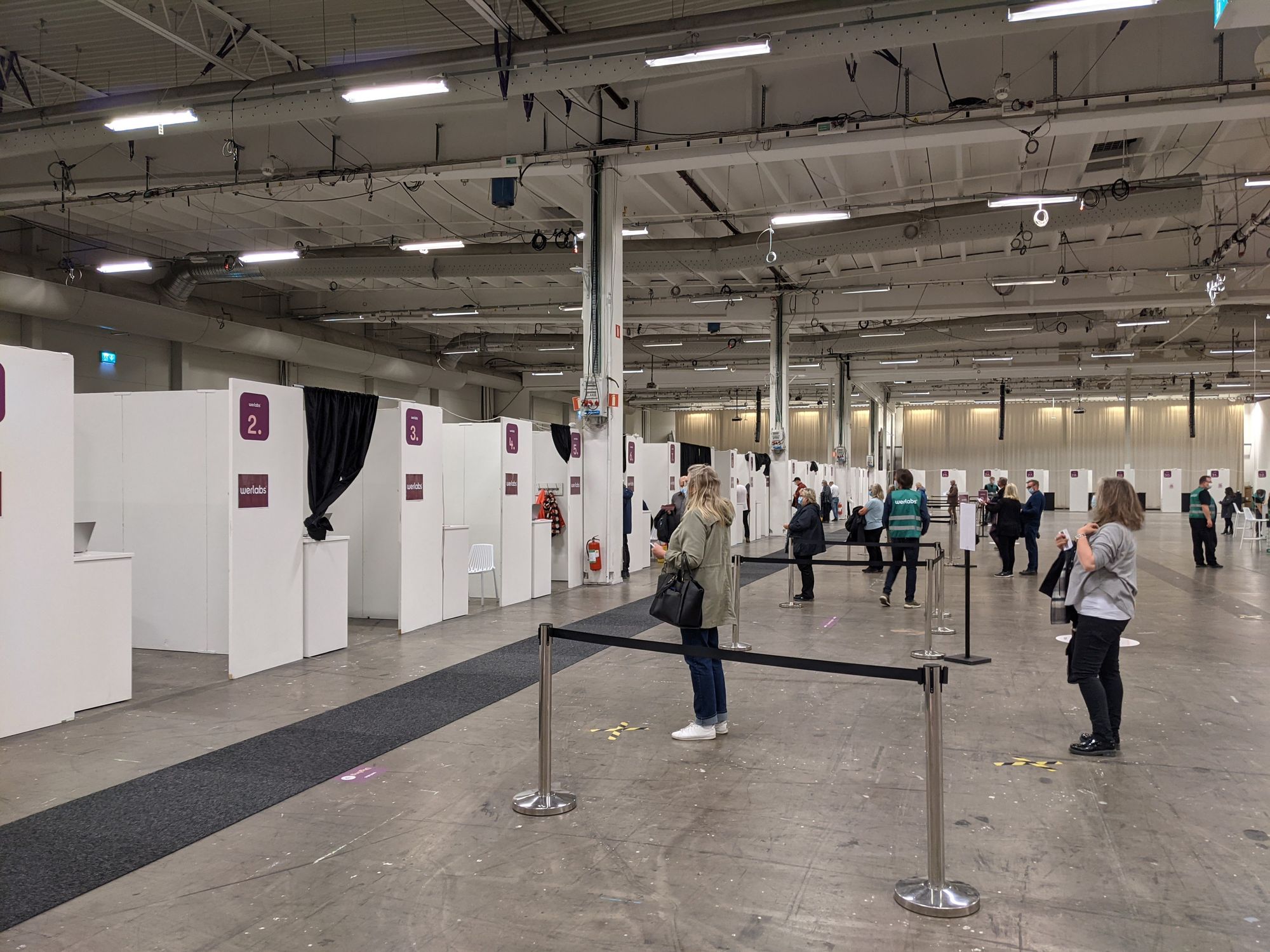
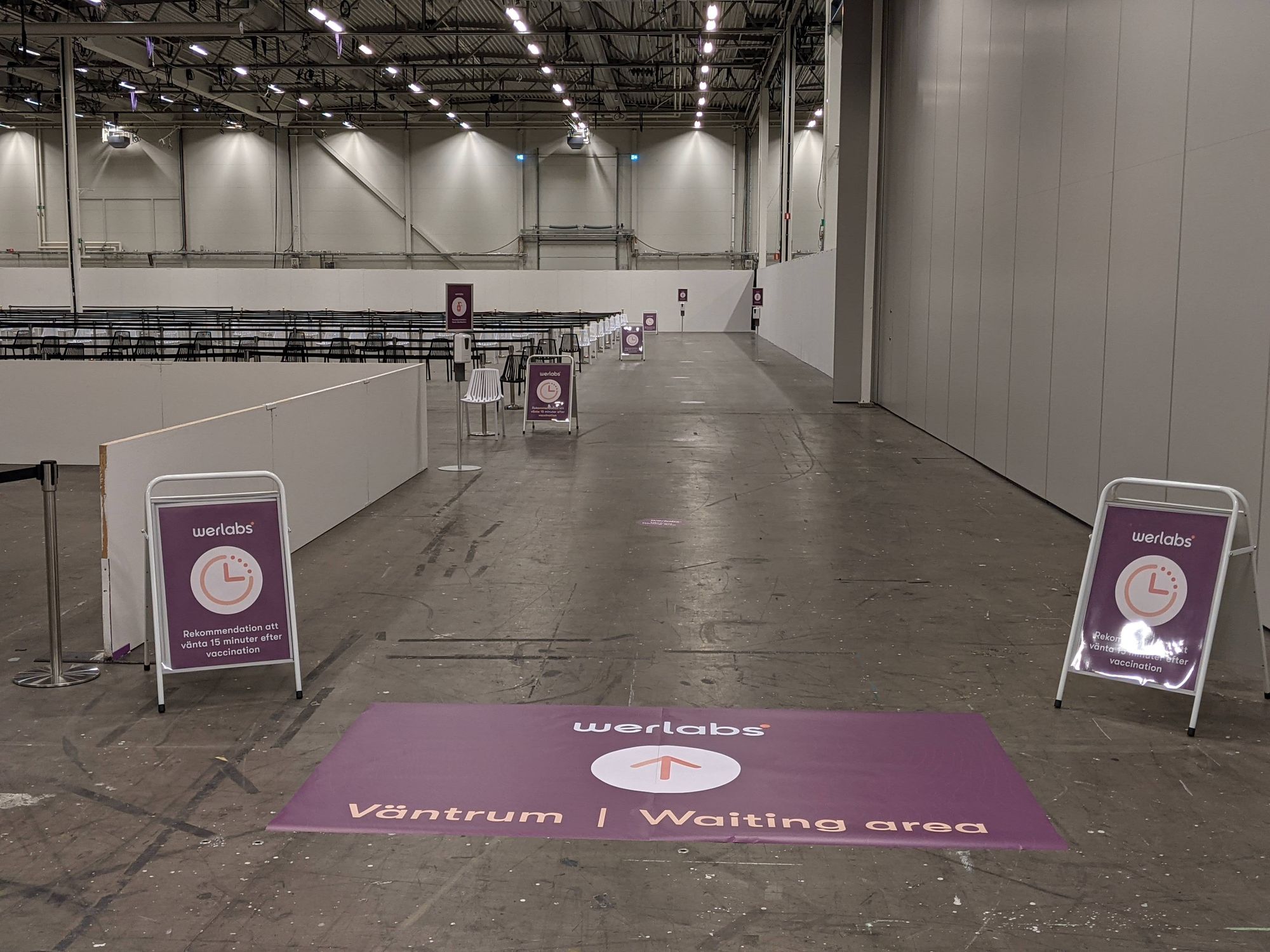
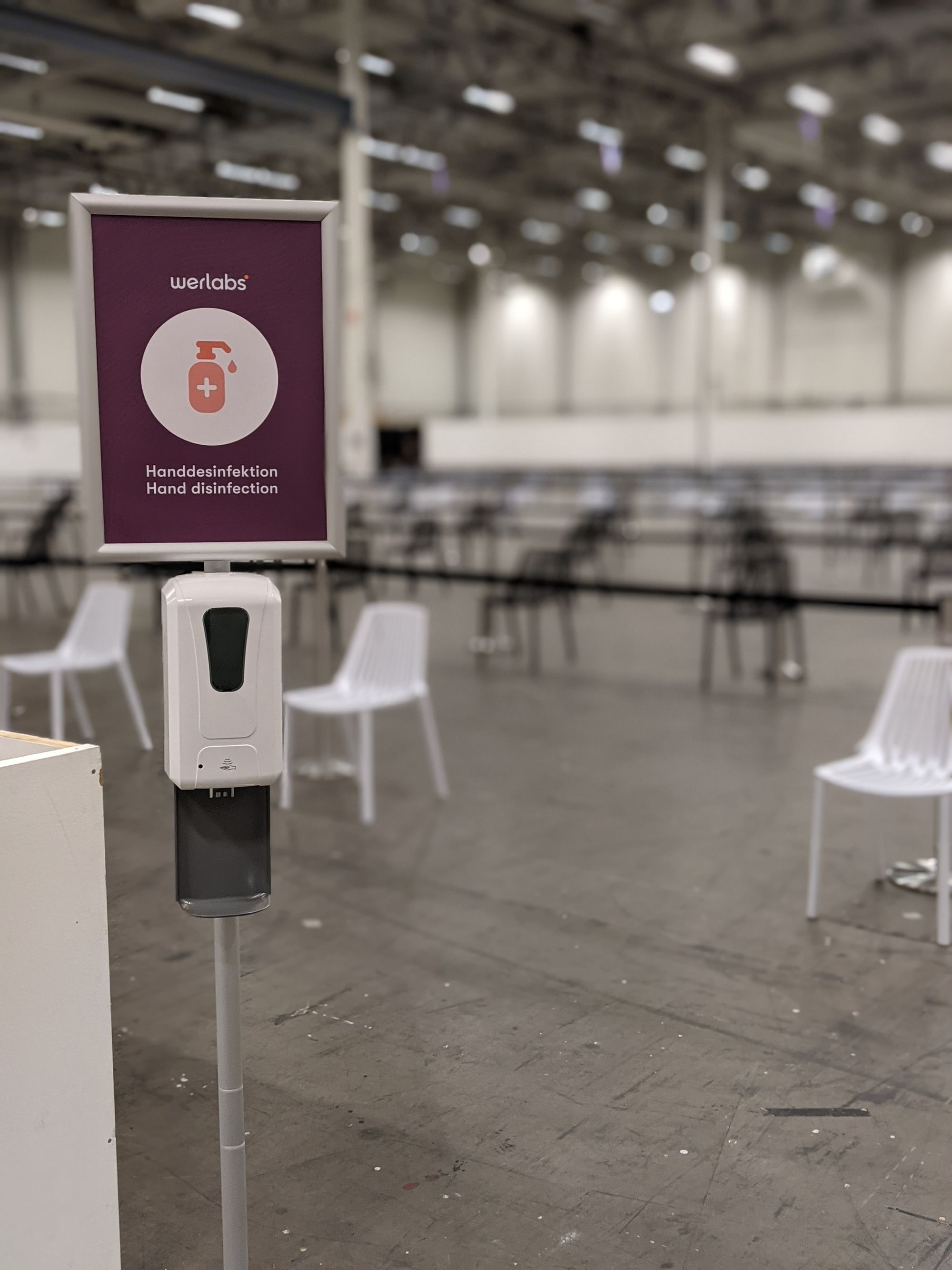
Adaptation and Expansion
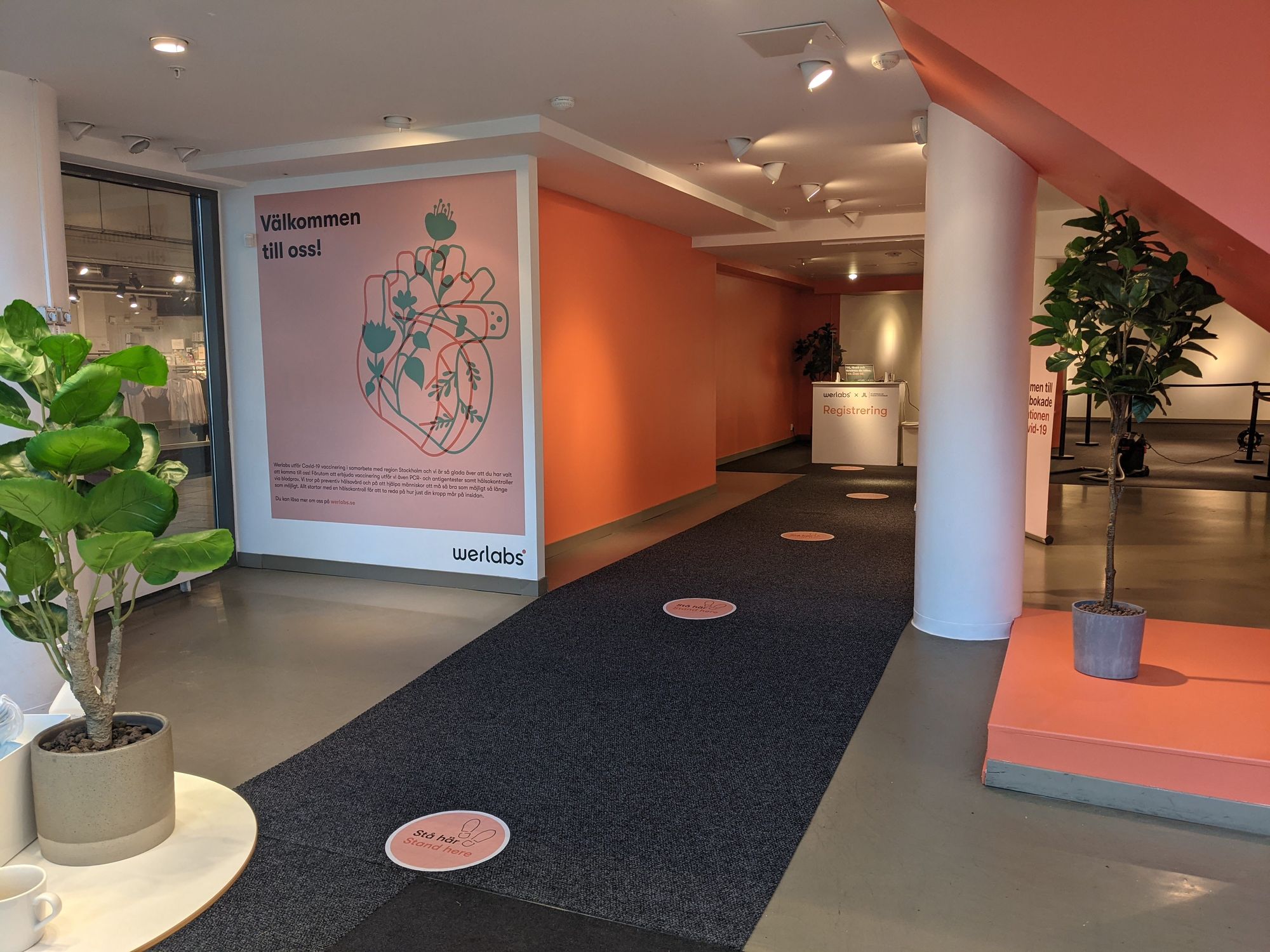
Responding to the Third Dose Requirement
As the pandemic evolved, so did our role. The vaccination initiative, initially planned to run from April to October 2021, extended to administering third doses. This phase saw us opening a scaled-down vaccination centre in central Stockholm.
Improving User Experience
Leveraging feedback from the Kista experience, we aimed to make the new location feel warmer and more welcoming. A key focus was to humanize the experience, countering the impersonal 'cattle-herding' atmosphere often associated with mass vaccination sites.
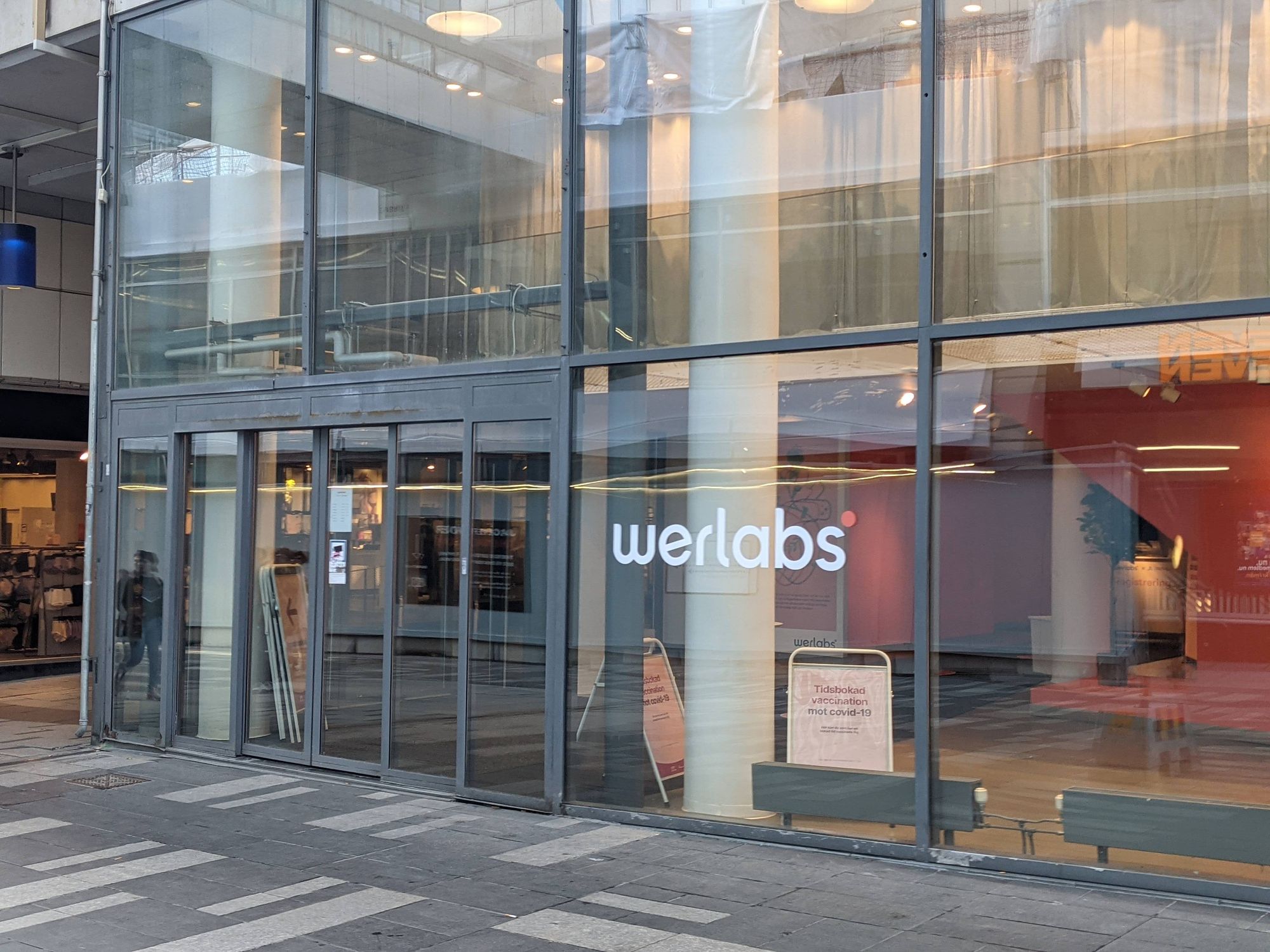
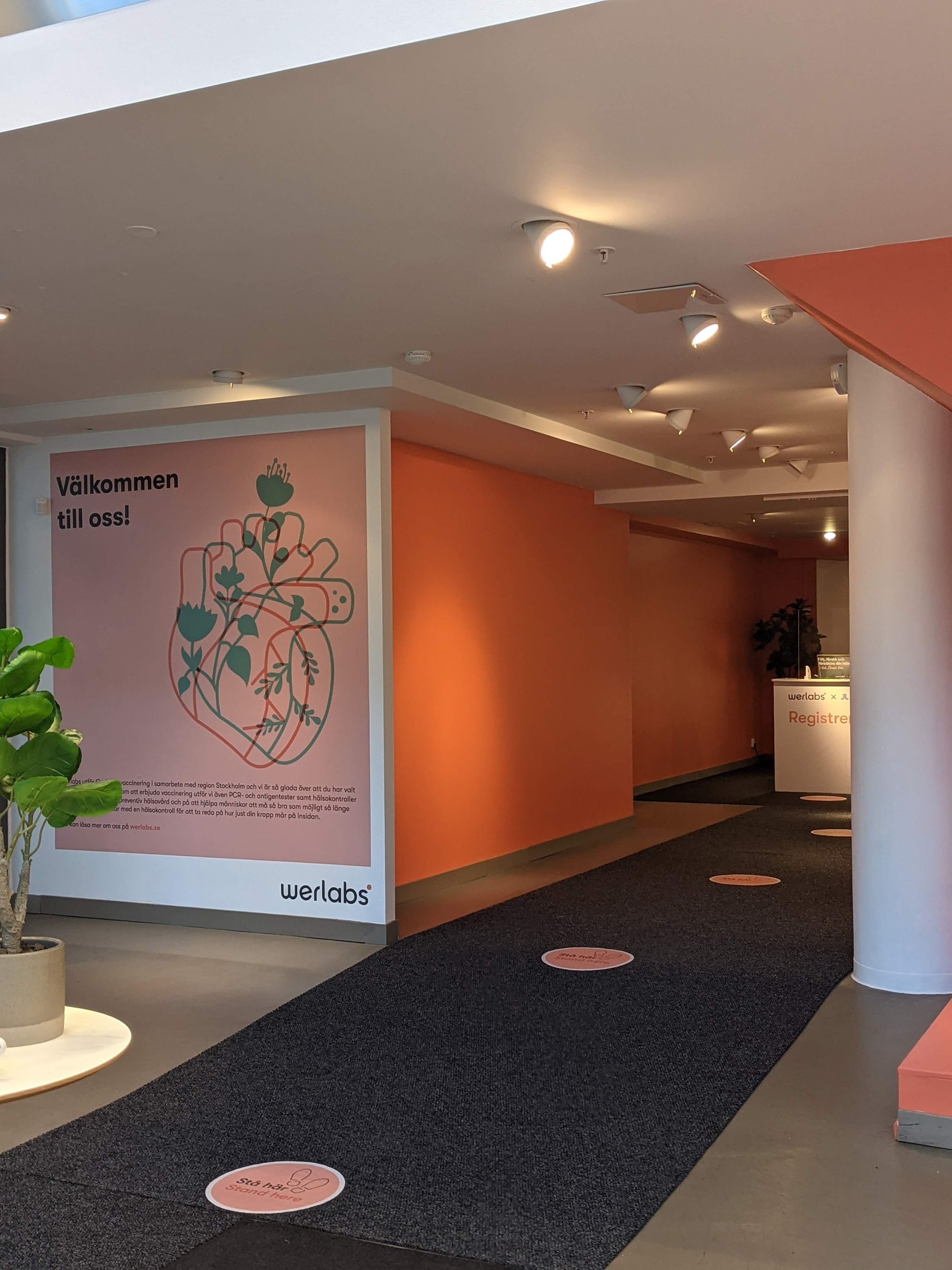
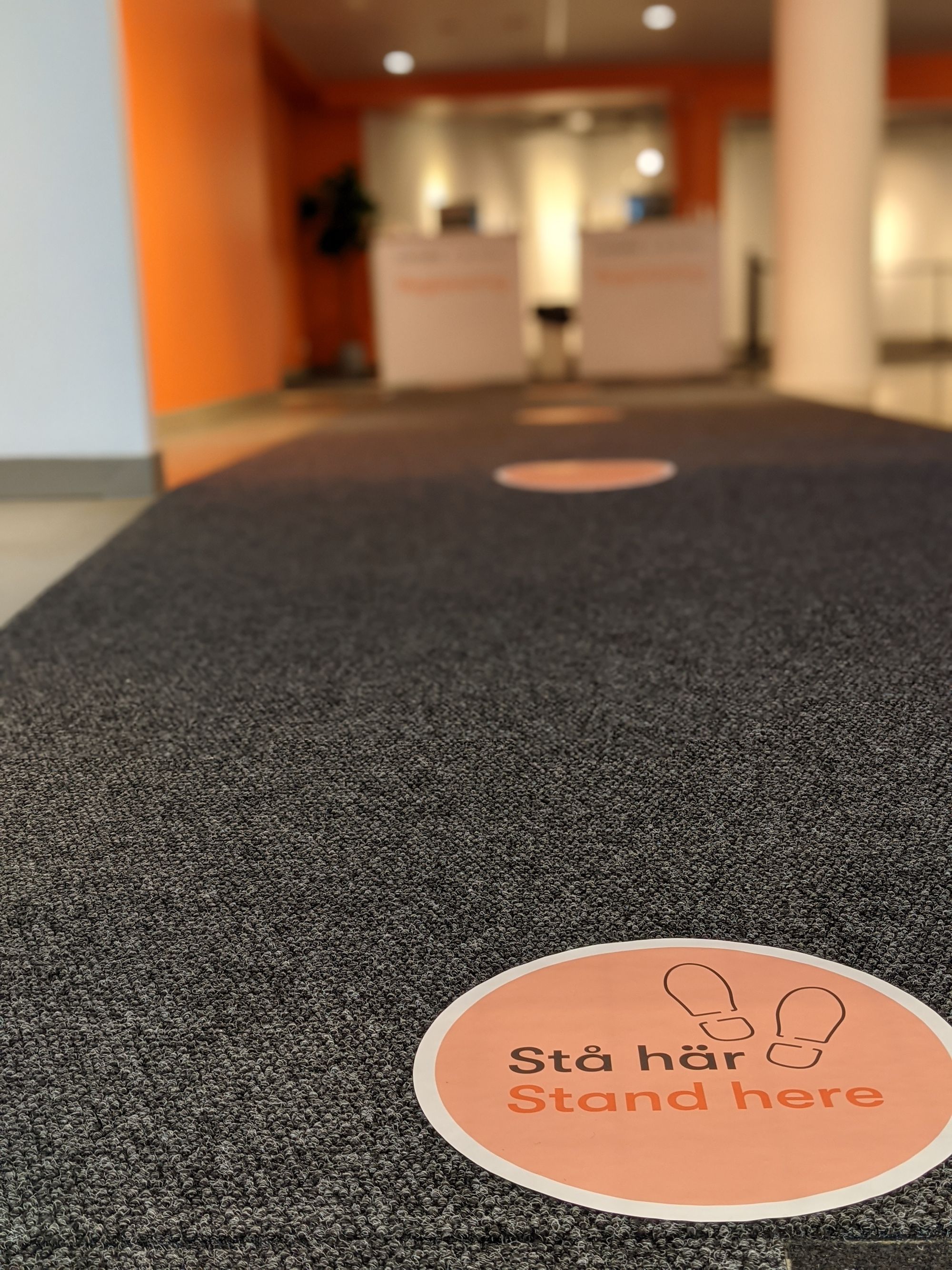
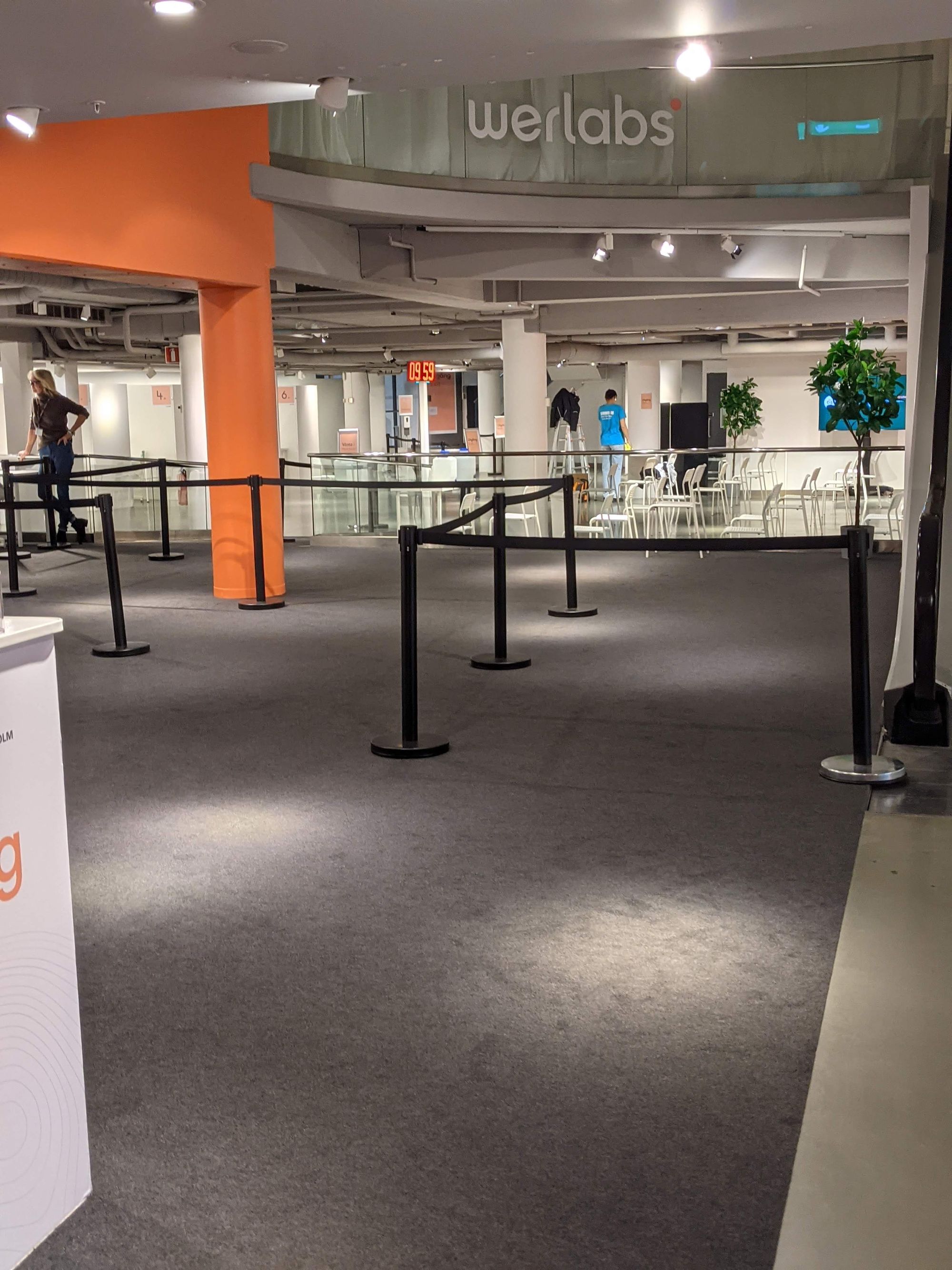
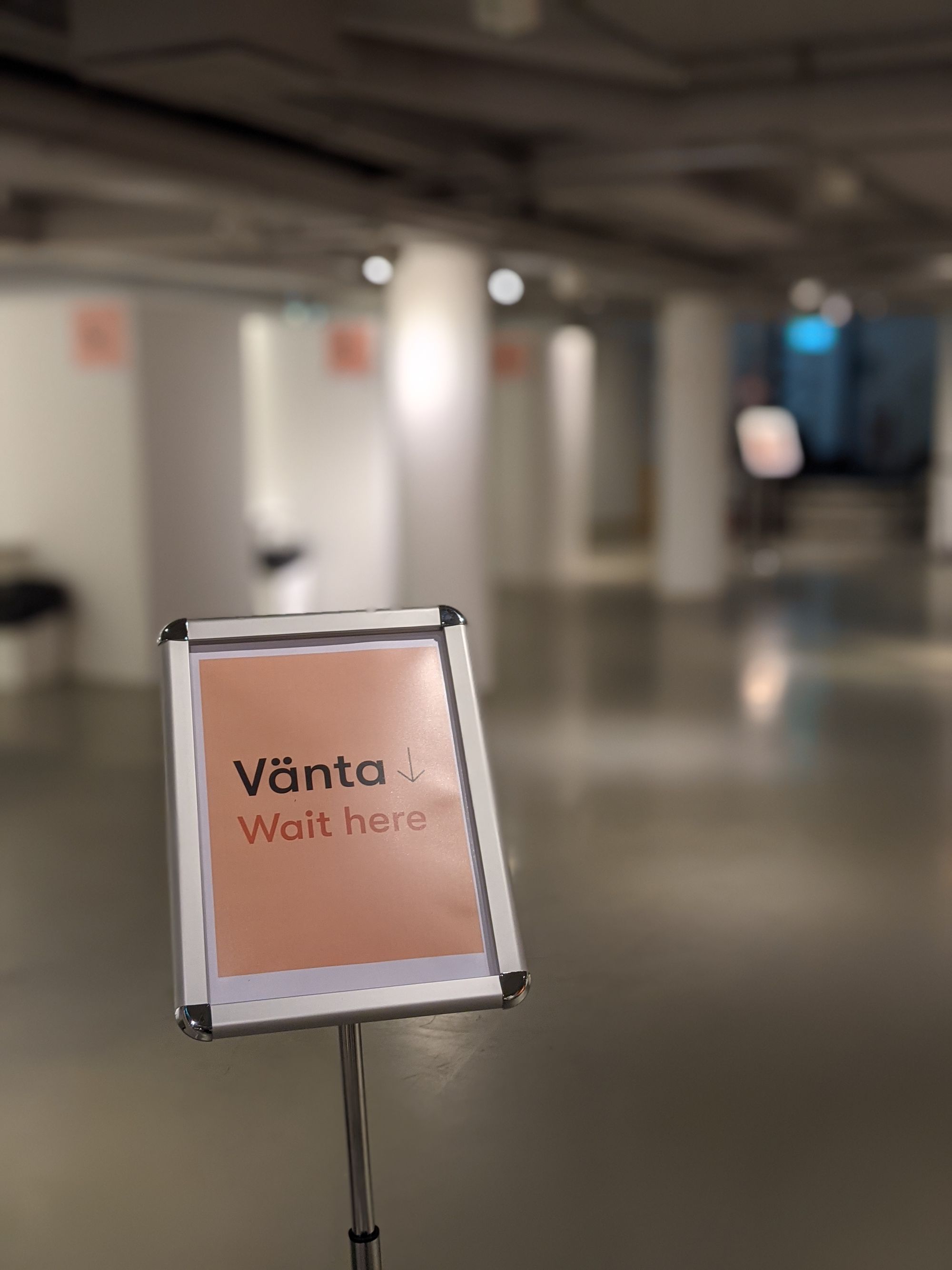
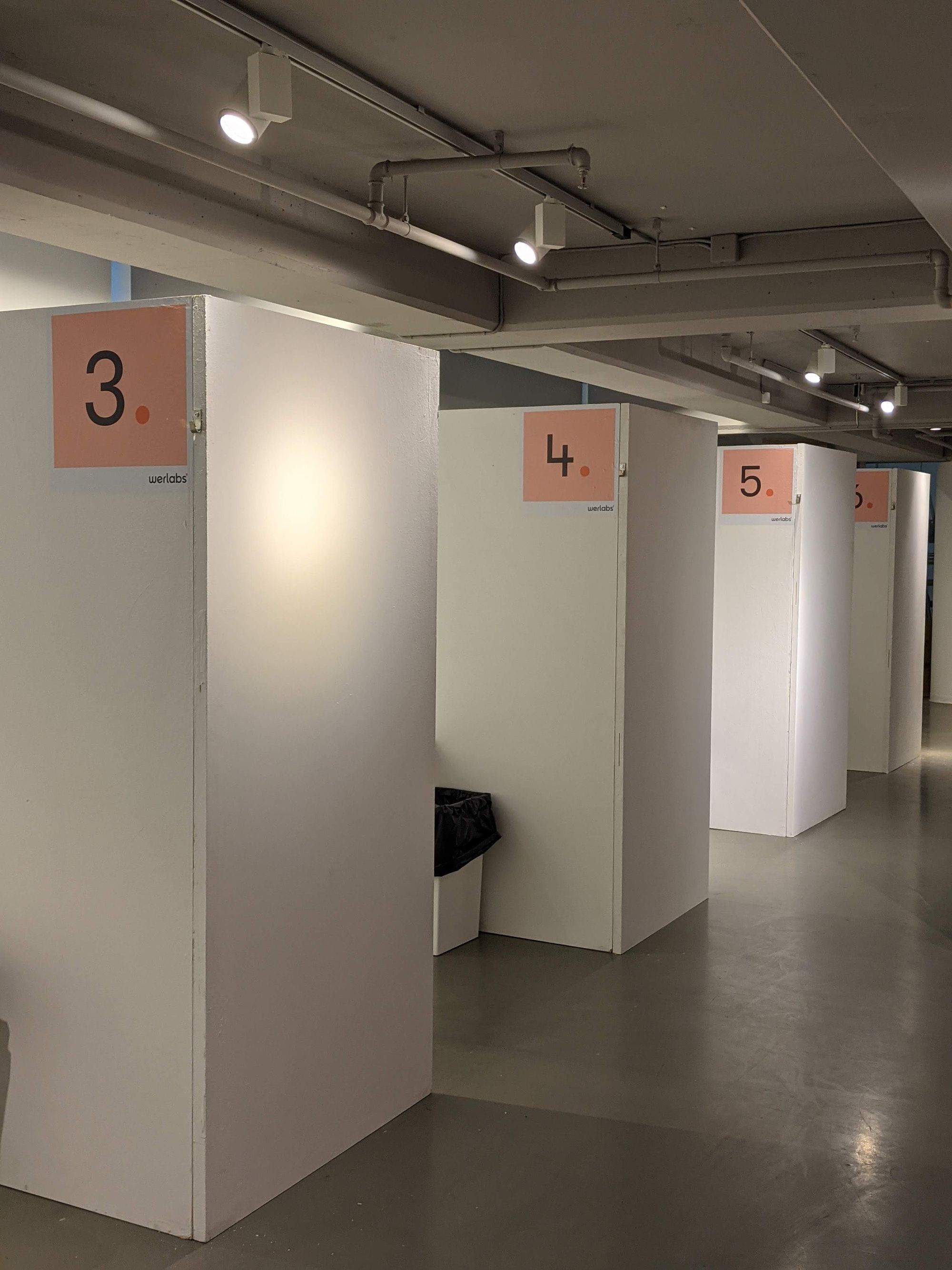
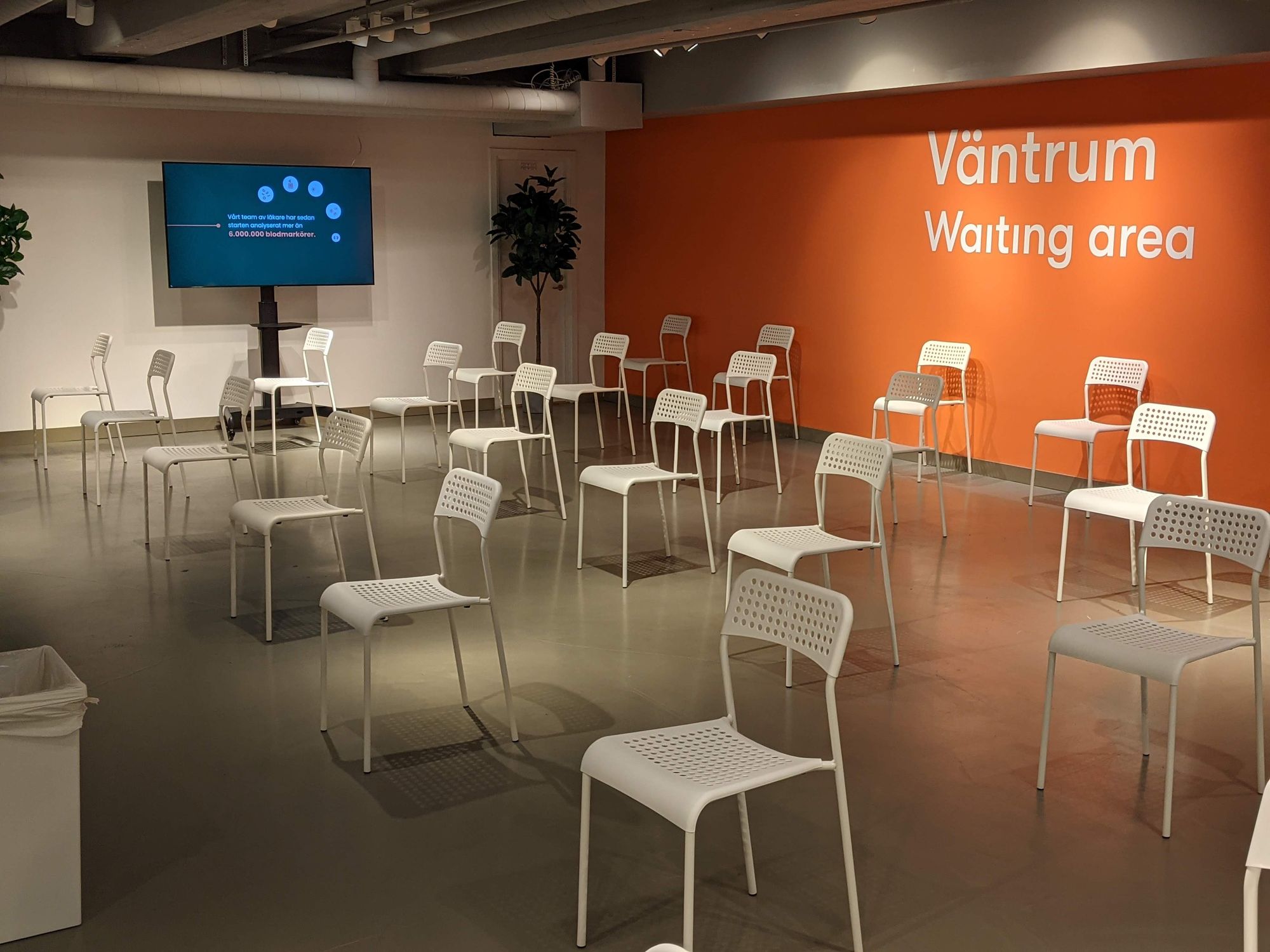
Execution and Impact
Efficient Vaccination Process
At the peak of our operation, we successfully vaccinated 5000 people daily, with each session lasting under 2.5 minutes. This high-efficiency model was largely due to our meticulous planning and user-centric design approach.
Digital Vaccine Card Integration
Post-vaccination, individuals were entered into our system, enabling them to access a digital vaccine card for future reference. This seamless integration of digital tools enhanced the user experience, providing lasting value beyond the vaccination day.
Conclusion
This project at Werlabs was not just about managing a health crisis; it was a profound exercise in empathy, logistics, and user experience design. It demonstrated the power of UX principles in addressing real-world challenges and highlighted the importance of adaptability and responsiveness to user feedback in crisis management.
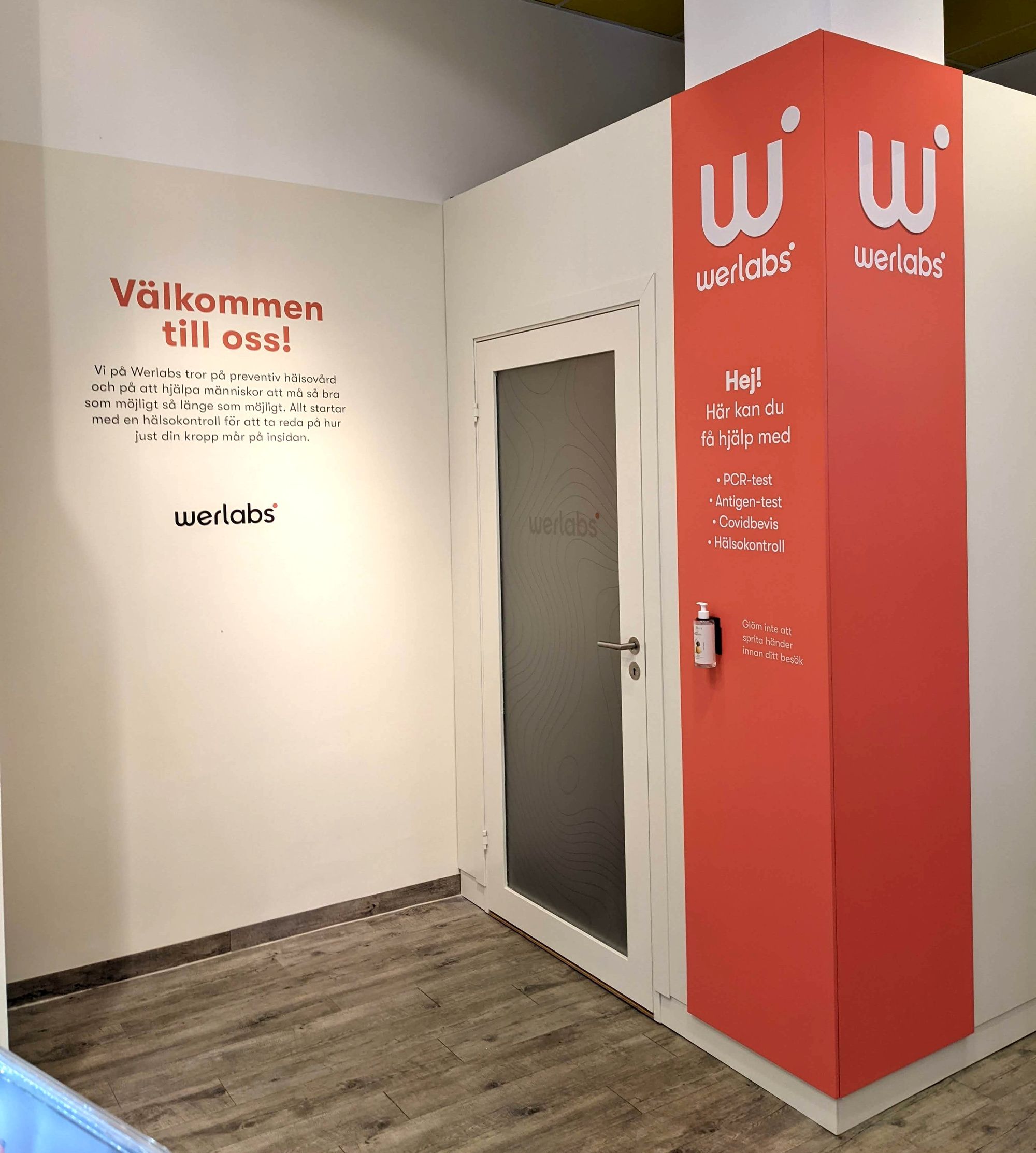
TL;DR
As the new Head of Design at Werlabs, I led a significant Covid-19 vaccination initiative in Stockholm. Through service blueprints, efficient floor planning, and empathetic design, we facilitated the vaccination of thousands, ensuring a seamless and user-friendly experience. The project was a testament to the impact of thoughtful design in public health crises.
